China's greatest novel has a new forum: opera
Updated: 2016-09-09 11:26
By Lia Zhu in San Francisco(China Daily USA)
|
|||||||||
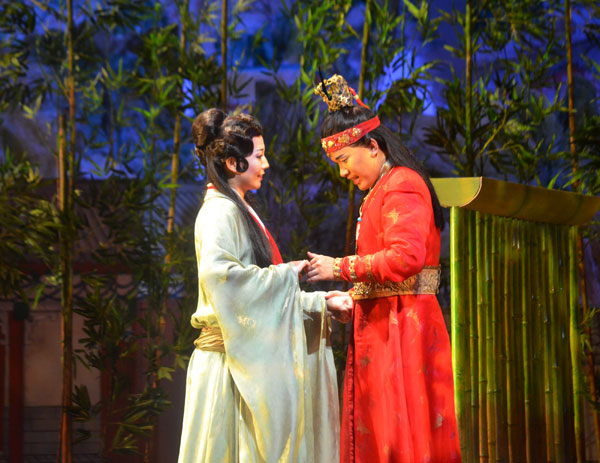 |
|
Dai Yu (left)and Bao Yu, as player by South Korean soprano Pureum Jo and Chinese tenor Yijie Shi, recite poems together, leading them to a profound attraction and the discovery that they are soulmates. LIA ZHU / CHINA DAILY |
“Goodbye to our innocent world. Goodbye to our naïve thought. Goodbye, Bao Yu,” a despairing Dai Yu sings in a sad farewell aria to her lover Bao Yu as she realizes it’s hopeless to fight the old traditions.
In billowy, translucent costumes, singing in English, the characters of Dream of the Red Chamber, China’s greatest literary work, for the first time come alive on a 21st century opera stage at the San Francisco Opera House.
The 18th-century Chinese novel is comparable to the plays of Shakespeare. Often compared with Romeo and Juliet, the novel centers on a love triangle between hero Bao Yu, his beautiful cousin Dai Yu, and his future wife, another beautiful cousin named Bao Chai.
The story has been adapted countless times into film, drama, ballet and twice into popular TV series in China. But it’s the first time this Chinese masterpiece will find a new audience in the form of Western opera.
The project was first initiated by the Chinese Heritage Foundation Friends of Minnesota with a mission to “showcase the best in Chinese literature and encourage innovation in the arts”.
Commissioned by the San Francisco Opera, the project assembled a “dream team” composed by Bright Sheng, Chinese-American composer, conductor and pianist; David Henry Hwang, playwright and winner of the 1988 Tony Award for Best Play for his M. Butterfly; Stan Lai, an award-winning playwright and director; and Tim Yip, Academy Award-winning art director and designer.
But the adapation of the epic story into a two-play opera was first deemed a “mission impossible” by Hwang, as the novel is twice as long as Tolstoy’s War and Peace and has more than 400 characters.
“In opera, you have to boil down the material to one major element,” said Sheng, a MacArthur Fellowship recipient. He said, the team, after long conversations, decided to render the opera as a love story and kept the political intrigue as the historical backdrop.
Co-librettists David Henry Hwang and Bright Sheng have done an impressive job in distilling the story, and the love triangle of Bao Yu, Dai Yu and Bao Chai is great operatic material, regardless of cultural background, said San Francisco Opera General Director Matthew Shilvock.
“If people understand young love and sacrifice, as well as family pressures, they’ll find resonance in this opera,” he said. “Opera is also a universal art form, as with Western elements in Chinese theater that appeal to the audience in China. I see no reason why such fantastic cultural and historical details on stage will not move the Western audience.”
Dream of the Red Chamber, also called The Story of the Stone, is an autobiographical novel by the 18th century writer Cao Xueqin who lived during the Qing Dynasty. It is considered the most important and popular novel in the history of Chinese literature and still widely read throughout the Chinese-speaking world.
The reason why it continues to cast its spell on today’s Chinese readers is it combines the qualities of Jane Austen with the grand sweep of a novel such as Vanity Fair or the works of Balzac, said John Minford, a translator of the novel whose English version was published by Penguin Classics in 1986.
“Written just before the onset of China’s 19th-century decline, Stone (the novel) captures brilliantly the ‘glory that was China’, and the knife edge on which that glory balanced. This is what makes it such essential reading today,” he said in a 2011 article.
However, the essential reading is barely known in the West. An obsession of the economic statistics and a focus on the political relations were blamed for the neglect of the epic literary work.
The opera is expected to serve as a window for better understanding Chinese culture and how human relationships work in China, according to Doreen Woo Ho, a board member of the San Francisco Opera.
Considered an encyclopedia of Chinese society, the novel is often recommended as the best starting point for any understanding of Chinese psychology, culture and society.
Among the audience at the final dress rehearsal of the opera on Wednesday night were 35 middle school students and their teachers.
“I think it’s important to teach them a little bit about Chinese literature especially Dream of the Red Chamber, because it’s a way for us to get into a new world completely vanished,” said Adam Ross, product manager of the Digital Chinese Initiative at Chinese American International School in San Francisco.
It’s important for the students to be able to talk about Red Chamber after seeing the opera because everyone in China knows it, he said. “It’s a way to connect with other Chinese people,” he added.
“It’s a good story,” said a student whose Chinese name is Peiling. Her favorite character is Dai Yu, because “she’s really emotional” and “she doesn’t take things lightly”.
“At some point I will (read the novel),” she said, “It’s a bit long, though.”
liazhu@chinadailyusa.com
- Three women planning 'imminent' attacks arrested in France: minister
- China, Britain vow to deepen military exchanges, mutual trust
- British parliament to debate second Brexit referendum petition
- Chinese women find their way through the glass ceiling
- Rousseff leaves presidential residence in salutation
- Thousands of Chinese rally in Paris to call for 'security for all'
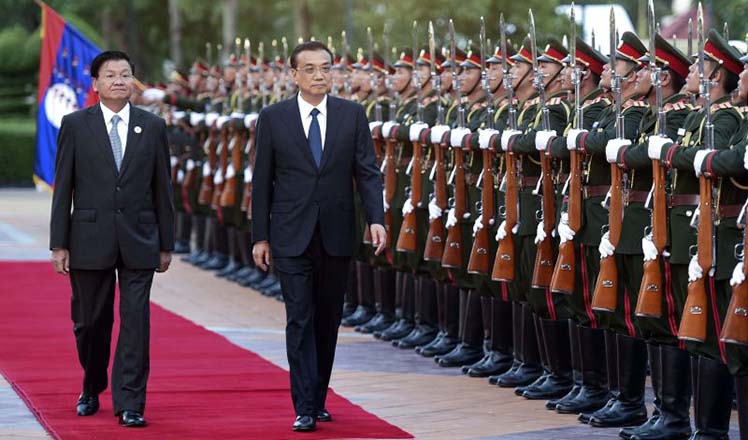
 Sights and sounds of Premier Li's visit to Laos
Sights and sounds of Premier Li's visit to Laos
 Yao Ming and Class of 2016 receive Hall of Fame jackets
Yao Ming and Class of 2016 receive Hall of Fame jackets
 Bullet train attendants strut new look in Xi'an
Bullet train attendants strut new look in Xi'an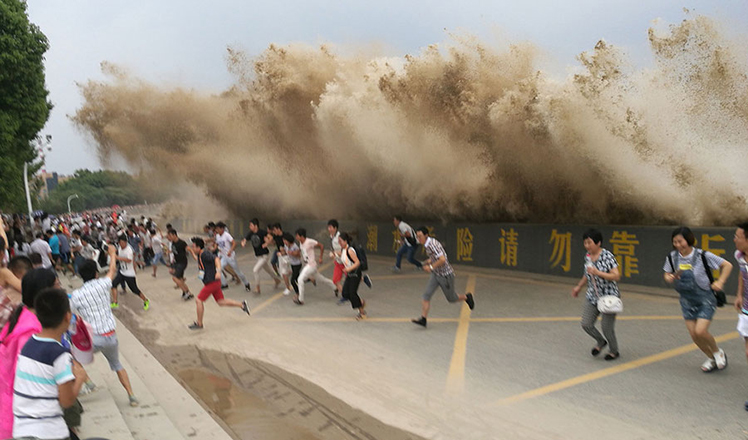
 Ten photos from around China: Sept 2 - 8
Ten photos from around China: Sept 2 - 8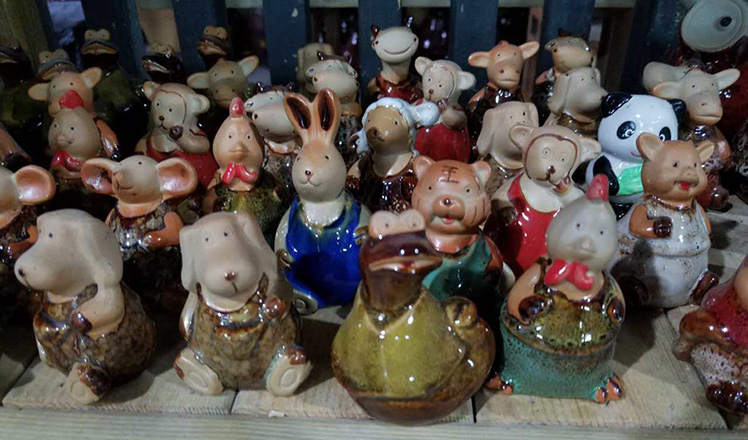
 Turning mud into work of art
Turning mud into work of art
 Unforgettable moments of Premier Li at ASEAN meeting
Unforgettable moments of Premier Li at ASEAN meeting
 Six policy signals China sent at G20 Summit
Six policy signals China sent at G20 Summit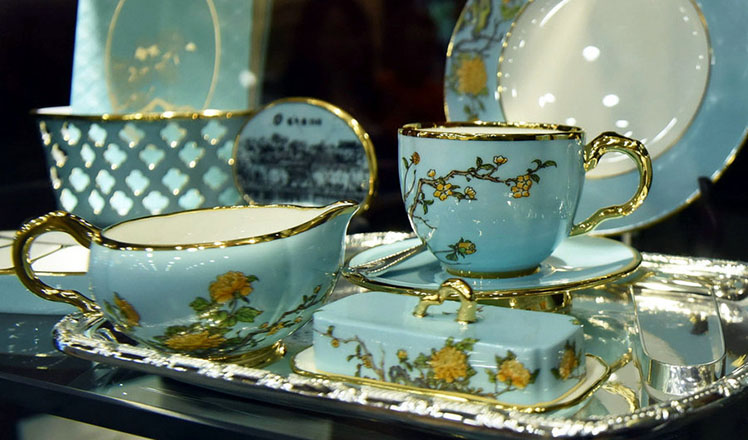
 'First Lady table ware' a hit in Hangzhou
'First Lady table ware' a hit in Hangzhou
Most Viewed
Editor's Picks

|

|

|

|

|

|
Today's Top News
Trump outlines anti-terror plan, proposing extreme vetting for immigrants
Phelps puts spotlight on cupping
US launches airstrikes against IS targets in Libya's Sirte
Ministry slams US-Korean THAAD deployment
Two police officers shot at protest in Dallas
Abe's blame game reveals his policies failing to get results
Ending wildlife trafficking must be policy priority in Asia
Effects of supply-side reform take time to be seen
US Weekly

|

|









